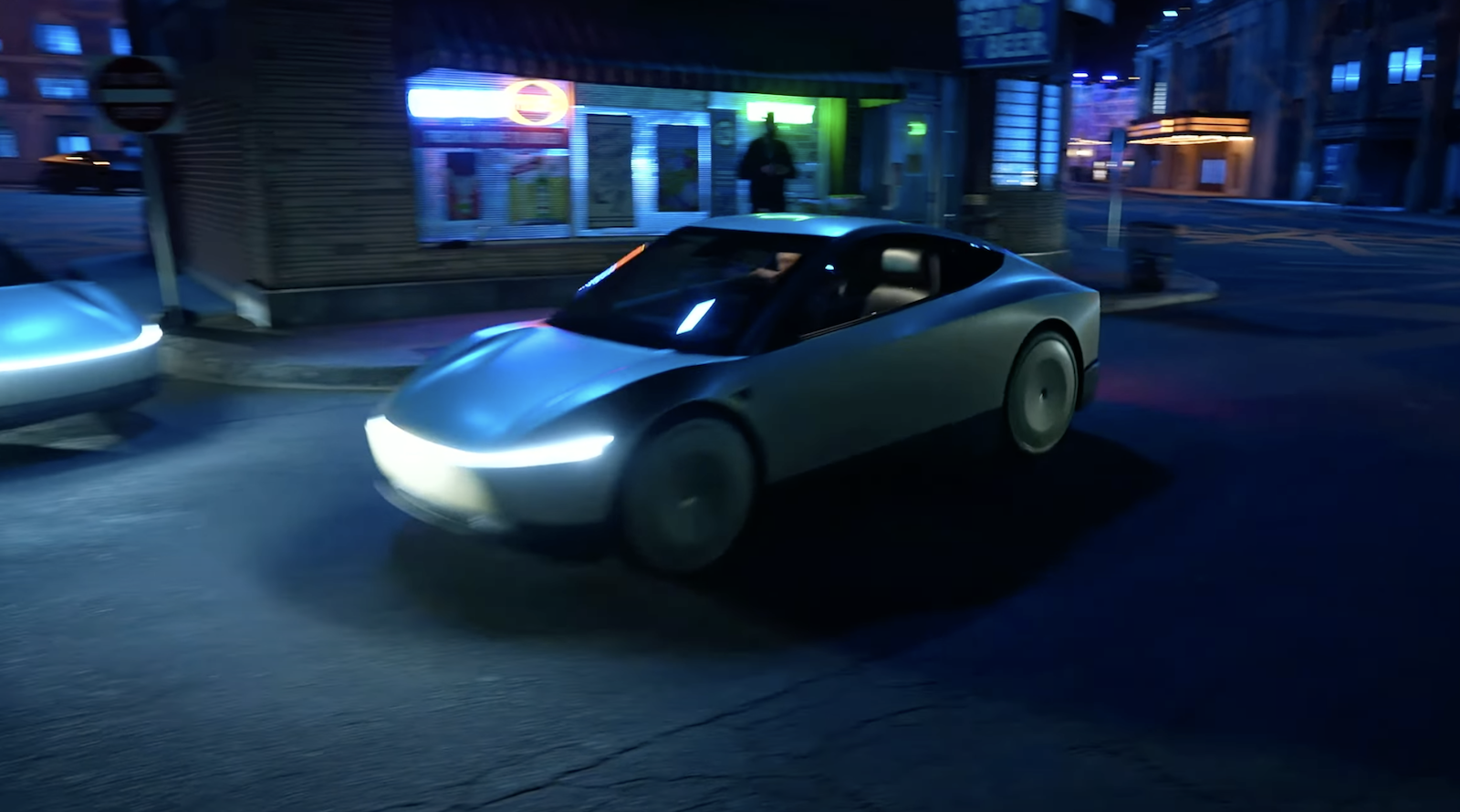Sign up for daily news updates from CleanTechnica on email. Or follow us on Google News!
Whenever zero emission electric drive replaces the 280 million gas-burning vehicles that currently travel along US roads, there will be a collective freakout over the cost of new power generation assets needed to handle the load. Or not, as the case may be. The electric vehicle of 2050 could be a more efficient piece of machinery than today’s models, enabling them to push fossil fuels aside while reducing the need for new energy infrastructure.
Modeling The Electric Vehicle Of 2050
The electric vehicle of 2050 is the subject of a new study from EPRI, the Electric Power Research Institute, in collaboration with the organization NRDC.
Under the title, “Valuing Improvements in Electric Vehicle Efficiency,” the study assesses how lightweighting and other efficiency improvements could help offset the increased demand for power generation as electric vehicles begin flooding the streets.
The study deploys a modeling tool developed by EPRI called US-REGEN, which is short for “US Regional Economy, Greenhouse Gas, and Energy.” The model opens a window into the future of power generation by combining three models in one, consisting of dispatch/capacity, consumer behavior, and fuel supply.
“The three models are solved iteratively to convergence, allowing analysis of policy impacts on the electric sector taking into account electricity demand responses, and conversely allowing analysis of how economy-wide energy policies and technological improvements impact electric demand and load shapes,” EPRI explains.
“The model has been used over the past 15 years to assess consumer energy choices and optimal grid/energy system buildout under a wide range of policy and technology scenarios,” EPRI adds.
What About Alternative Transportation?
If you’re wondering where alternative transportation fits into the vehicle electrification picture, that’s a good question. Addressing the potential impact of growth and improvements in the alternative transportation field is beyond the scope of the new EPRI-NRDC study, which confines itself to the impact of vehicle technology improvements.
Still, it’s worth considering how other modes of transportation could share the burden of replacing those 280 million gasmobiles, and the study does take a look at the potential for upending assumptions about the growth rate of vehicle-miles traveled.
One significant factor could be the replacement of a significant amount of car travel with expanded access to mass transportation networks. Ride sharing, remote work, and walkable/bikeable communities could also chip away at the model of individual car ownership and stretch out the time between charging cycles for electric vehicles, relieving pressure on the grid.
The growing market for electric scooters, motorcycles, and autocycles could also help shave down the number of full sized electric cars and other vehicles in need of charging infrastructure, helping to lighten the load on the nation’s power generation assets.
Access to rooftop solar panels, home energy storage, and other distributed energy resources could also help electric vehicle owners avoid sucking power from the grid.
Yet another variable is the rise of battery swapping technology, which can provide for the more efficient use of existing power generation assets.
If you’re thinking that space solar could also come into play, the 2050 timeline could be a good fit. Though, there are many hurdles to overcome. If you have any thoughts about that, drop us a note in the comment thread.
Electric Vehicles Good, Efficient Electric Vehicles Better
Another wrinkle to consider is the advent of onboard solar panels, which transfer the power generation and charging infrastructure onto the electric vehicle itself. Fuel cells could also add another alternative to the battery charging infrastructure.
However, we digress. The EPRI-NRDC study simply asks if efficiency improvements in electric vehicle technology would be sufficient to buffer the US power generation sector from upheaval as electrification saturates the transportation sector. The answer is yes, though it’s complicated.
There is a lot to unpack in the study, but the central point is that lightweighting and other improvements in electric vehicle efficiency would cut the amount of energy needed to move from one spot to another.
That’s different from improving battery range. An energy dense, long-range battery could use just as much energy per mile as a short-range battery. The ultimate aim is to use less energy per mile.
“Efficiency and lightweighting steps could effectively cut energy consumption per mile in half over the next 30 years,” the study explains.
Reducing weight, aerodynamic drag, and tire resistance are among the measures evaluated by the study, in addition to improvements in the efficiency of the powertrain and the development of smaller, lighter batteries.
Benefits To Consumers
The EPRI-NRDC study assesses the savings to consumers from energy efficiency improvements in electric vehicles. Though, the challenge is to tweak the technology without raising the cost of the vehicle. Assuming a steady state for the price of an electric vehicle, the study projects a consumer savings of more than $200 billion per year by 2050. That figure is based primarily on the falling total cost of ownership for electric vehicles compared to gasmobiles. It also accounts for avoided infrastructure expenses related to more efficient vehicle technology, described as “reduced investments in the physical grid and charger buildout needed to support the shift towards electric mobility.”
In terms of the vehicle battery in particular, the study suggests that smaller, more efficient batteries would enable more drivers to charge up from an ordinary household outlet, reducing the pressure to build dedicated charging stations and avoiding the need for expensive home electrical upgrades.
Smaller batteries could also result in follow-on benefits related to reducing or even eliminating environmental and human rights complications in the battery supply chain. Though, the study indicates that more information is needed.
“Further work is suggested to examine in more detail the cost of the proposed vehicle efficiency strategies, to estimate the supply chain benefits of getting more miles from less battery material, and to conduct a broader assessment of additional ways that more efficient vehicles can contribute to consumer, automaker, and grid value,” the study explains.
About That Weight Issue …
If the scenarios anticipated by the study are to realize their fullest impact, there will have to be a sea change in US car culture. As things stand now, the preference is for bulk, heft, and luxury over efficiency. That’s true of gasmobiles, too, but it’s an especially good fit for electric vehicles due to the expense and size of the battery.
Favorable tax incentives and insurance policies could help steer consumer sentiment in favor of smaller, lighter vehicles. Some automakers are not waiting around for that to happen. They are already anticipating that a shift in consumer sentiment is afoot.
Keep an eye on Vietnamese automaker Vinfast, which is laying plans to sell its new VF3 electric mini-SUV in the US. Not to be outdone, Ford has been prepping a small “affordable” EV for the US market, and rumor has it the company is introducing an electric version of the Puma subcompact crossover in Europe, too.
Then there’s the Swedish firm Luvly, which has unveiled a “snap-together” flatpack electric city car. No word yet on availability, so stay tuned for more on that.
Follow me @tinamcasey on Bluesky, Threads, Post, and LinkedIn.
Image: The electric vehicle of the future will be lightweight and energy efficient (courtesy of Luvly).
Have a tip for CleanTechnica? Want to advertise? Want to suggest a guest for our CleanTech Talk podcast? Contact us here.
Latest CleanTechnica.TV Video
CleanTechnica uses affiliate links. See our policy here.





